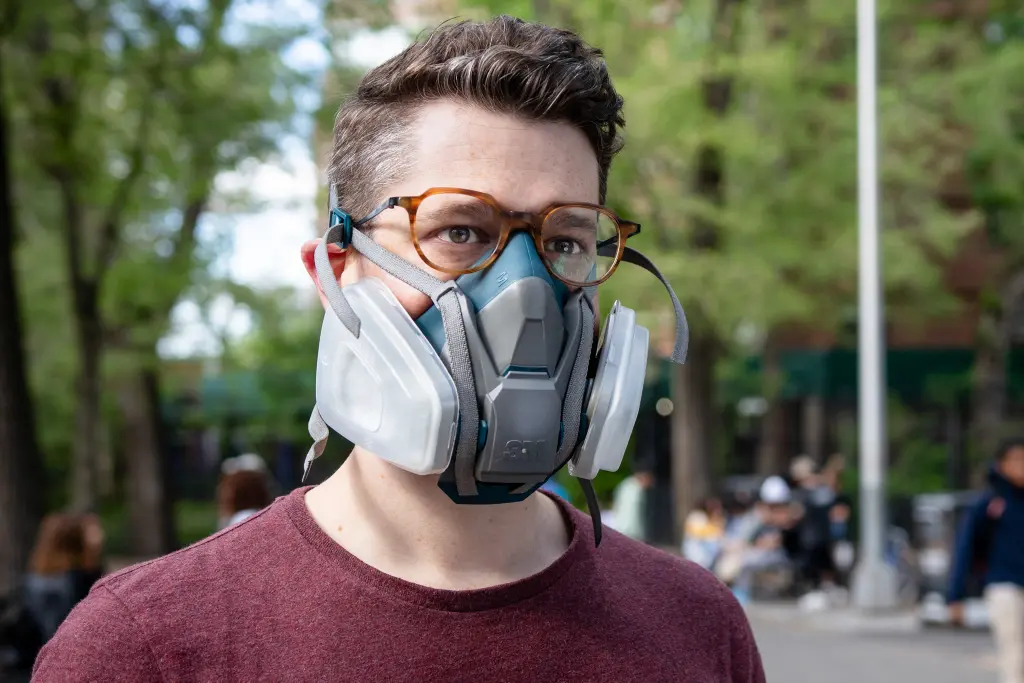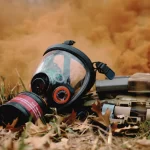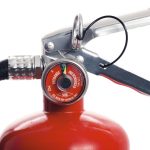I. Introduction
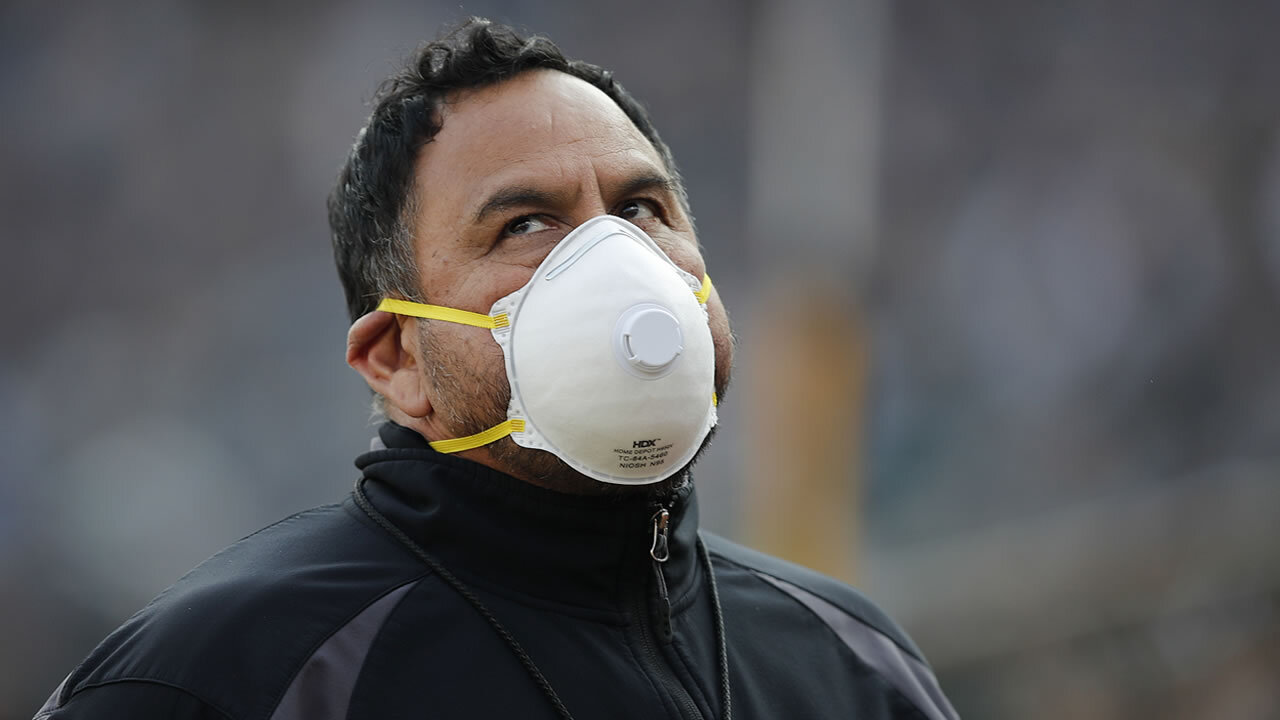
A. The hazards of fire smoke Fire smoke is a significant hazard during fire emergencies, consisting of a combination of toxic gases, particulate matter, and chemicals. Inhalation of fire smoke can lead to severe health issues and even death. Therefore, it is crucial to prioritize respiratory protection when dealing with fire smoke.
B. The importance of selecting the right mask for protection Selecting the right mask for fire smoke protection is essential to ensure the safety and well-being of individuals exposed to fire smoke. A properly chosen mask can provide effective filtration, reduce the risk of smoke inhalation, and protect against the harmful effects of toxic gases, allowing individuals to escape and survive fire emergencies.
II. Understanding Fire Smoke Masks
A. What are fire smoke masks?
Fire smoke masks, also known as respirators or breathing apparatus, are personal protective equipment designed to protect individuals from inhaling harmful smoke and gases during fire emergencies. They provide a barrier between the wearer’s respiratory system and the surrounding polluted air, helping filter out hazardous substances.
- Explanation of their purpose and benefits The primary purpose of fire smoke masks is to filter out smoke particles, particulate matter, toxic gases, and chemicals present in fire smoke. They provide respiratory protection, allowing individuals to breathe cleaner air and reducing the risk of respiratory damage and related health issues.
B. Types of fire smoke masks
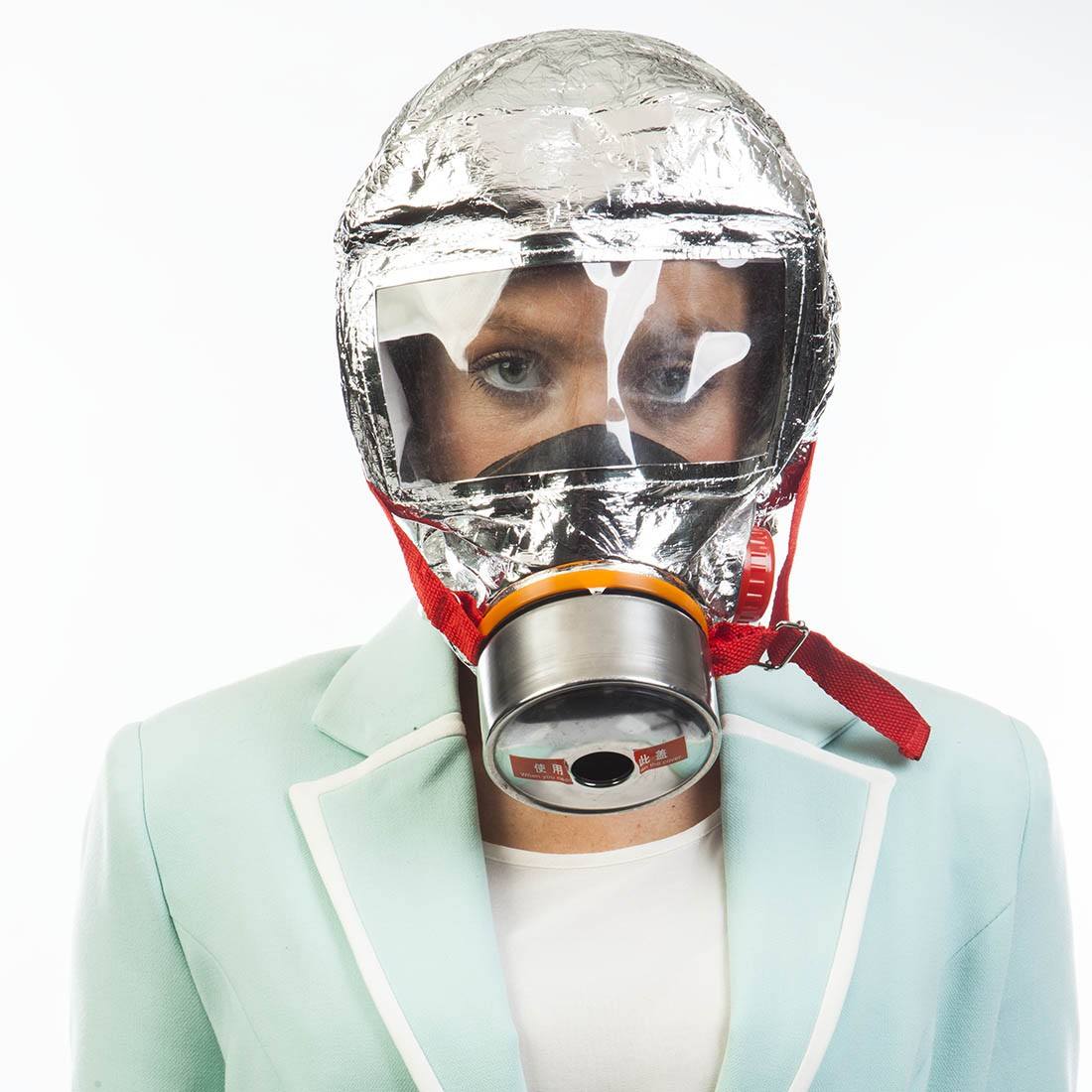
- Particulate respirators Particulate respirators, such as N95 masks, are designed to filter out particulate matter and solid particles suspended in the air. They offer protection against smoke particles and small airborne contaminants but may not provide sufficient protection against gases and chemicals present in fire smoke.
- Gas masks Gas masks are specially designed to provide protection against toxic gases, chemicals, and fumes. They typically feature a filter cartridge or canister to absorb or neutralize harmful substances before they reach the wearer’s respiratory system. Gas masks are effective in situations where the primary concern is toxic gases.
- Self-contained breathing apparatus (SCBA) SCBA is a type of respiratory protection that provides the highest level of respiratory protection. It consists of a compressed air tank, a full-face mask, and a regulator. SCBA offers a continuous supply of clean air, enabling individuals to safely navigate through environments with high levels of smoke and toxic gases. SCBA is commonly used by firefighters and emergency responders in hazardous fire conditions.
III. Factors to Consider in Selecting a Fire Smoke Mask
A. Level of protection needed
When selecting a fire smoke mask, it is crucial to consider the specific hazards and types of smoke and gases present in fires. Different masks offer varying levels of protection against smoke particles, toxic gases, or a combination of both. Assessing the specific hazards will help determine the appropriate level of protection needed.
B. Fit and comfort A properly fitted mask is essential to ensure effective filtration and protection. It should create a secure seal around the nose and mouth, preventing smoke from bypassing the filter. Masks with adjustable straps and nose clips can help achieve a better fit. Comfort features such as cushioning, exhalation valves, and lightweight materials are also important, especially for prolonged use.
C. Filter efficiency and duration Understanding filtration ratings, such as N95 or P100, is crucial in determining the filter efficiency of a mask. Higher filtration ratings indicate a greater ability to filter out solid particles or aerosols. Consider the expected duration of mask usage and the recommended filter replacement intervals to ensure continued effective filtration.
IV. Top Fire Smoke Mask Options
A. Particulate Respirators (N95, P100)
- Description and features Particulate respirators, such as N95 and P100 masks, are designed to filter out airborne particles, including those present in fire smoke. These masks are typically made of a synthetic material that filters particles down to certain sizes, offering various levels of filtration efficiency. They often have a flexible nose clip and adjustable straps for a secure fit.
- Advantages and limitations
- Advantages:
- Effective filtration of airborne particles, including fine particulate matter found in smoke.
- Comfortable fit and breathability, allowing for extended use during firefighting or evacuation scenarios.
- Easy to wear and adjust, making them suitable for a wide range of users.
- Limitations:
- Limited protection against toxic gases, such as carbon monoxide or hydrogen cyanide, which can be present in fire smoke.
- Filtration efficiency can be affected by improper fit or seal, reducing overall effectiveness.
- Disposable masks may have a limited lifespan and require regular replacements.
B. Gas Masks
- Description and features Gas masks are designed to protect against both particulate matter and certain toxic gases and chemicals found in fire smoke. They typically consist of a full-face mask with filters that provide combined protection against respiratory hazards. Gas masks often have dual-cartridge systems and exhalation valves for ease of breathing.
- Advantages and limitations
- Advantages:
- Effective protection against a range of toxic gases and particulate matter found in fire smoke.
- Full-face coverage provides additional protection for the eyes and face.
- Some models may have communication systems integrated for effective communication in firefighting operations.
- Limitations:
- Can be more cumbersome and heavier compared to other mask options, limiting mobility.
- Regular filter replacements are necessary for continued protection against specific gases and chemicals.
- Proper fit and seal are vital for optimal protection, requiring proper training and adjustments.
C. Self-contained Breathing Apparatus (SCBA)
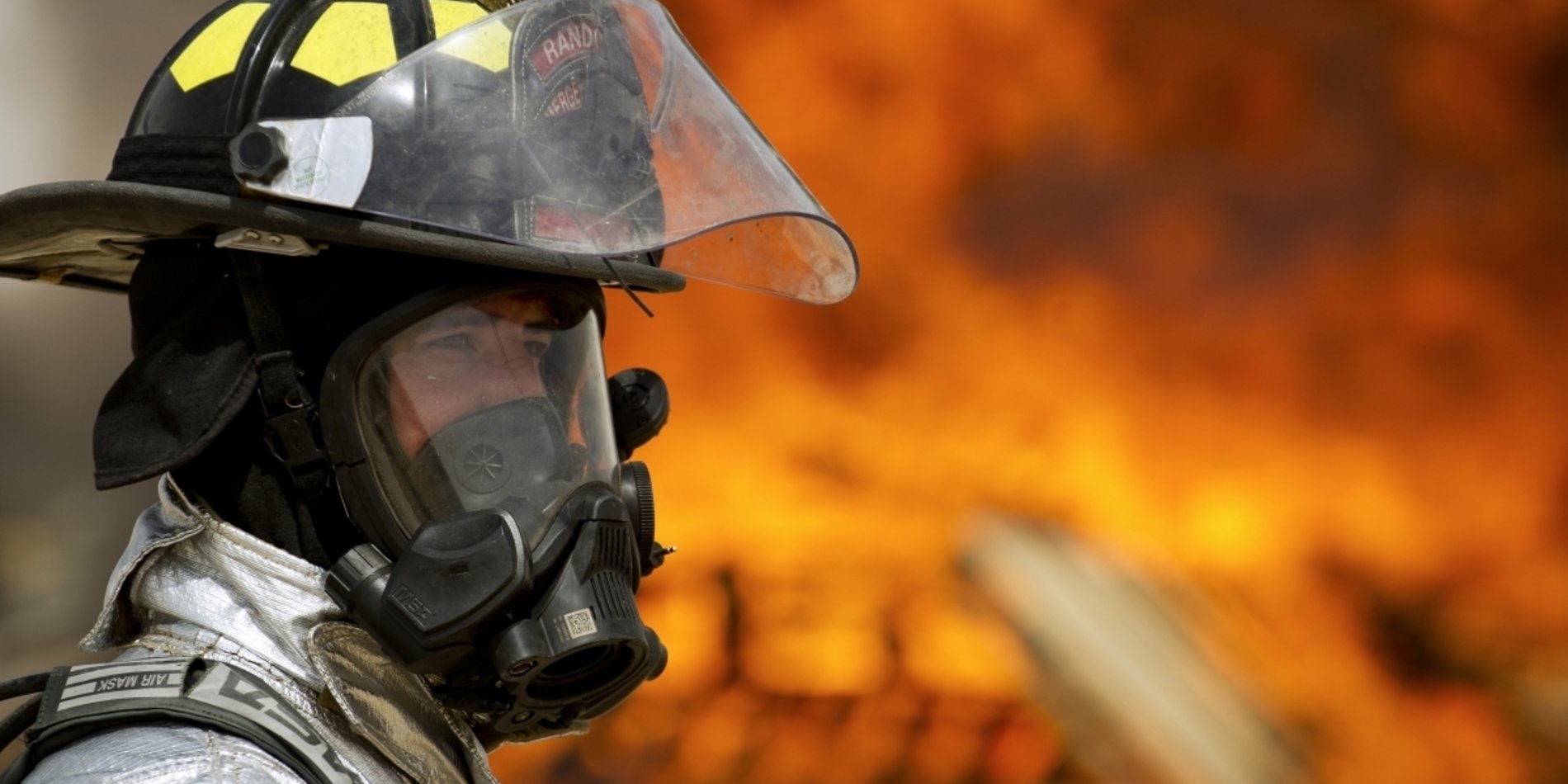
- Description and features Self-contained Breathing Apparatus (SCBA) is the highest level of respiratory protection for firefighters or individuals operating in extreme fire smoke environments. SCBA consists of a full-face mask connected to a high-pressure air tank that provides independent, breathable air supply. It offers comprehensive protection against both particulate matter and toxic gases.
- Advantages and limitations
- Advantages:
- Provides a continuous supply of clean, breathable air, ensuring maximum protection in the harshest fire smoke conditions.
- Highest level of protection against toxic gases, combustion products, and particulate matter.
- Often equipped with additional safety features like built-in alarms and communication systems.
- Limitations:
- Requires extensive training for proper usage and maintenance.
- Heavier and bulkier than other mask options, limiting mobility and endurance.
- Regular maintenance and inspections are necessary to ensure proper functioning.
V. Additional Considerations for Fire Smoke Protection
A. Training and proper usage
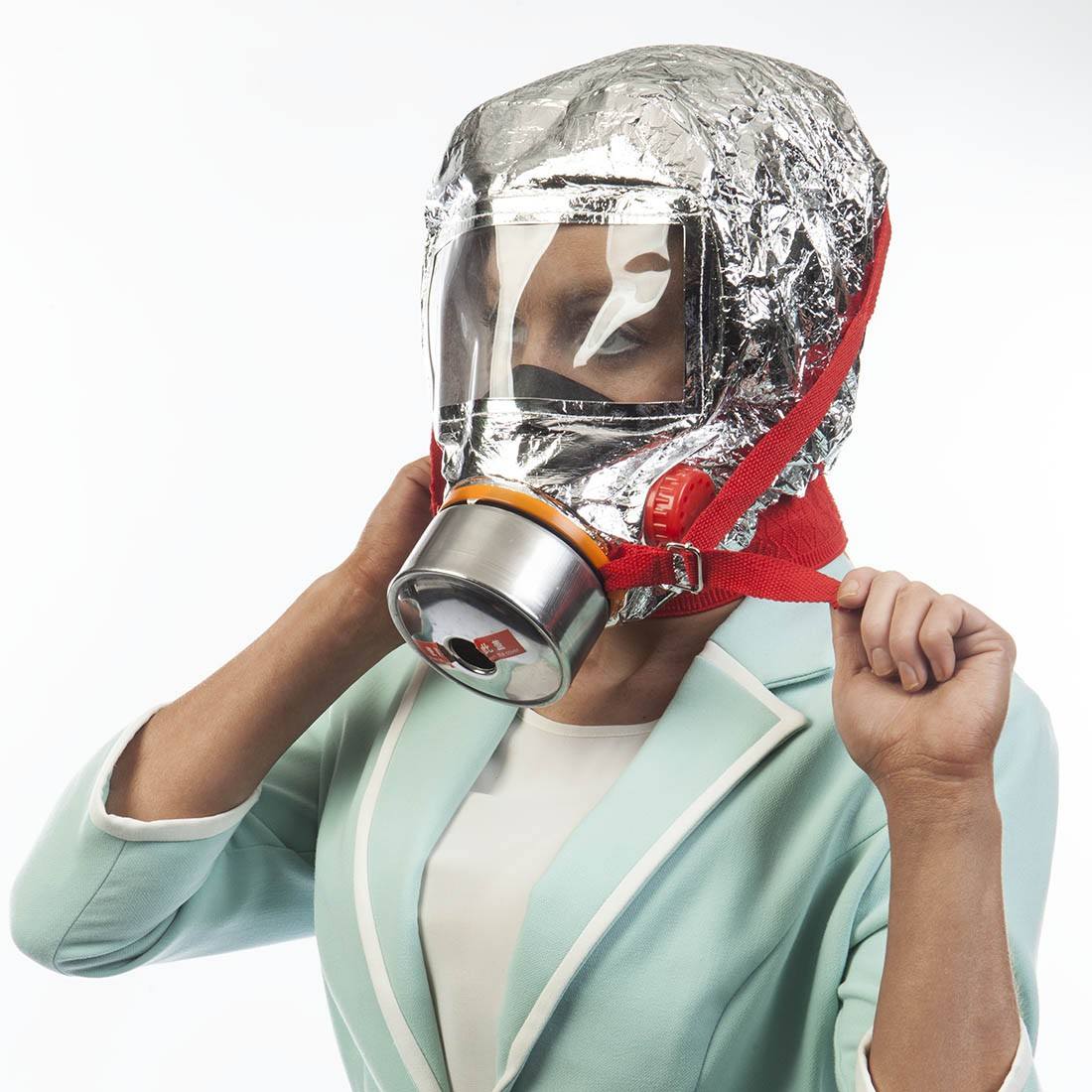
- Importance of training in mask usage and maintenance Proper training is essential for correctly using and maintaining fire smoke masks. Training should cover mask donning and doffing techniques, seal checks, filter replacement, and general maintenance. Regular training sessions help ensure that individuals understand the proper usage procedures and can effectively protect themselves in fire smoke situations.
B. Maintenance and care
- Cleaning and storage guidelines Following manufacturer guidelines for cleaning and storage is crucial for maintaining the effectiveness of the masks. This may include wiping down the mask with disinfectant wipes, rinsing filters (if applicable), and storing the masks in a clean and dry environment.
- Regular inspection and filter replacement Regular inspection of masks for any signs of damage or wear is necessary to ensure their reliability. Filters should be replaced according to manufacturer recommendations or when they become clogged or damaged. Regular maintenance and filter replacement help maintain the masks’ efficacy and ensure consistent protection.
VI. Conclusion
Choosing the best mask for fire smoke protection involves considering the specific hazards, filtration needs, and user requirements. Particulate respirators, gas masks, and self-contained breathing apparatus (SCBA) are three options with different features, advantages, and limitations. Proper training in mask usage and maintenance, as well as regular inspections and filter replacements, are crucial for effective protection. By understanding the different options available and considering additional factors such as training and maintenance, individuals can select the most appropriate mask for fire smoke protection, minimizing the risks associated with inhaling harmful particles and gases during firefighting or evacuation operations.
